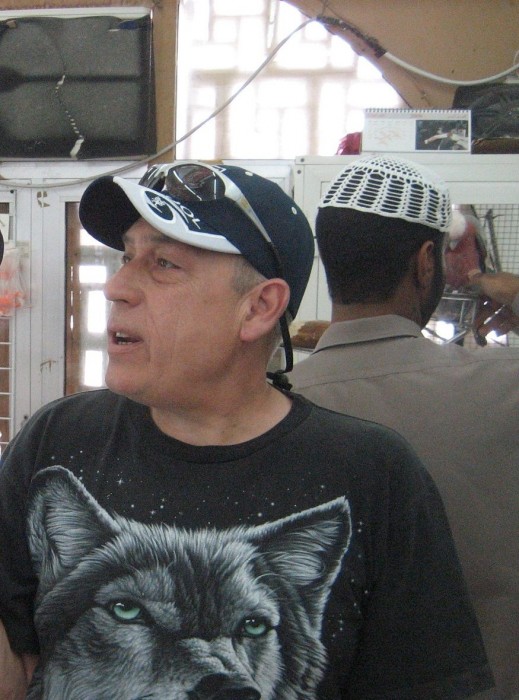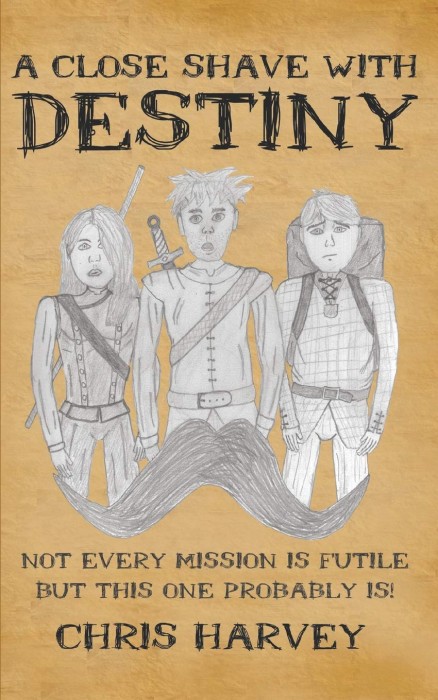PHP Deprecated: Creation of dynamic property Joomla\Registry\Registry::$default is deprecated in /home/authorsinfo/public_html/libraries/vendor/joomla/registry/src/Registry.php on line 937
PHP Deprecated: Creation of dynamic property plgContentLayerslideshow::$context is deprecated in /home/authorsinfo/public_html/plugins/content/layerslideshow/layerslideshow.php on line 38
PHP Deprecated: Creation of dynamic property SocialPoints::$string is deprecated in /home/authorsinfo/public_html/administrator/components/com_easysocial/includes/dependencies.php on line 123
PHP Deprecated: Creation of dynamic property SocialBadges::$string is deprecated in /home/authorsinfo/public_html/administrator/components/com_easysocial/includes/dependencies.php on line 123
Dog Training for People, Lesson 2: Wherever, Whenever
Meeting dogs at Shelters & Bringing them Home Successfully
During the many phases in saving a dog's life, simple handling techniques can literally mean the difference between life & death.
In the shelter:
Too often, staff, volunteers, and potential adopters pass a dog in a kennel and talk to him.
The dog may bark, lunge, cower, ignore, avoid, or otherwise appear unsocial.
Insecure dogs may want attention, but be misunderstood as outgoing & friendly, when actually they need calm leadership to rehabilitate any co-dependent insecurities, which can later lead to more dangerous behaviors, such as separation anxiety, stressful fixations, or even fear biting.
Any spectrum of behaviors exhibited in a shelter can be remedied, but it is often not mitigated by considering that the dog may have recently lived on the streets, been injured, abused, mishandled, surrendered by a trusted owner, and feel scared, confused, in pain or discomfort, and stressed.
*** A better way to gain a more accurate evaluation of how a dog feels, and to gain their trust, is:
1. avoid making eye contact, talking to them, nor trying to pet them.
2. Squat down to avoid appearing as if you are looming over them in a challenging or threatening position.
Turn sideways, as facing forward toward them is a dominant and challenging position.
3. Sitting sideways & simply waiting w/ calm, confident energy, & without talking to them nor looking at their eyes, shows them you respect their space, are not threatening them, & allows them to gain your scent & energy 1st on their own time & adjust to your presence.
If a dog is barking, pay attention to a concerned look in their eyes or if the dog is retreating or avoiding. Do not mislabel this uncertainty as “aggression”. This bark may simply be him bluffing that he is uncomfortable with your presence. Remaining low, sideways, calm & quiet will allow him to realize he need not fear.
Fear can slowly turn to curiosity. (And your proper position can also give overly excited dogs the time to subside and approach with respect in a healthier mindset.)
If a dog approaches, make no move. They may approach, which is not yet an invitation to touch them. They simply want to check you out. They may still likely feel wary or cautious, and you remaining still & patiently waiting will let them realize you can be trusted.
Their breathing may slow, tension may release from the legs or ears or tail. They may no longer look out the side of their eye in a nervous way, but their lids may relax. They may yawn or even lie down.
Be prepared to take several minutes for this process.
They may choose to sniff and go lie down farther away.
Be conscious that your energy remains calm & confident the entire time.
Once a dog approaches & seems relaxed, you can offer a treat. If a dog will not eat, he is still too stressed. If he takes a treat but moves away, he is still cautious. Repeat this to gain trust. The act of presenting the scent of a treat can help decrease fear & replace it w/ curiosity. Slowly letting your hand linger near them once they are comfortable to take treats can judge if they guard their new resource, still mistrust, or have become comfortable with your presence. They may allow touch after this phase. Do not rush this part, which would break newly tested trust.
Patiently introduce a leash. Do not immediately slip a leash over their head. This can break newly formed trust, as if they were “tricked” into captivity by a treat. Let them get used to the new item simply being present, perhaps sniffing it. Use the leash to give affection first. It is better to give affection on the chest or under the chin, which encourages confidence, not on top of the head, which is a dominant position; & some dogs startle or mistrust this position from lack of peripheral vision, too. Do not proceed if they avoid. Once they are trusting, offer a treat through the leash’s loop, so they choose to bring their head toward it. Do not force placing the loop over their head, so they do not view it is as a trick or trap; instead it helps build trust if they participate in allowing the leashing process. Give treats, affection w/ the leash, letting the leash go on their muzzle, off again, etc., repeating several times to desensitize them, and only place the loop gently over their head when they do not avoid.
Taking them for a walk is vital. It is one of the most primal instincts to follow a pack leader. It builds trust, releases stressed energy and will show immediate improvements in previous wariness, revealing more true temperament. Some dogs often also hold their potty for several days in kennels, adding more stress & discomfort to be considered when evaluating temperament. Walking them allows the dog to positively associate the person w/ the relief of pottying, the exercise which releases pent up stressed energy, the trust of the person using a proper approach & patient leashing at the kennel & then following the person as a pack leader.
These proper handling techniques can be the difference between life & death for a dog in a shelter, because without them, dogs, especially certain breeds with misunderstood reputations, often undergo "expert" evaluations that result in inaccurate results, mislabeling them unsocial or "aggressive", then they are only able to be saved by rescues who are often full and less likely to be able to save the dog, especially one who may need a savvy handler or foster home, costs of training, etc.
Potential private fosters or adopters, even if a willing rescue can be found to get the dog out, may be less likely to adopt given the inaccurate temperament information.
Often, these dogs are needlessly euthanized, while the ones given a proper chance, show their temperaments are fine once they get out of the pound and are handled correctly.
More helpful info once a dog leaves the shelter……
(Liken it to people trusting doctors who are calm &confident; we wouldn’t want a Dr. who is nervous or impatient w/ us. We can be like a “Dr.” helping our dog feel “well”. And in turn, we feel better, too!)
In the car:
After walking the dog several minutes, allow them to sniff the car with doors open. Have a crate on ground level. Offer water & treats. Allow them to go & in out of crate several times to retrieve treats or just to explore. If not using a crate, allow them to retrieve treats near the car and sniff and explore a few minutes. If you need to lift them, do not proceed if they seem nervous, body stiffens, or lip raises. Gently wrap the leash around their muzzle, which can protect you & calm them. Make sure you lift them securely & swiftly, placing them gently in the car.
When they lose their own balance or footing, this may scare them, so be aware of their point of view at all times. They have been in a stressful unfamiliar environment & are now being placed in a submissive position by someone they do not know. They may have matting, arthritis, or illness, that cause further pain, especially upon lifting, so be aware of these factors, & the only way they may have to tell you that they hurt or are scared is to snap.
So the more time you take to allow them to feel secure, the better to prevent breaking any newly formed trust. Using a crate may feel the most secure to the dog, as they naturally den, and a crate can be a safe place for a dog in a new situation, as well as provide safety for the new handler.
The crate can also be viewed negatively as they have just come from a similar kennel & may be reluctant to go in. Do not force them in nor pull. Tension on the leash only shuts them down or triggers their resistance instinct; gentle encouragement is better from lifting their tail, touching from behind, or a gentle tug/release just to indicate forward movement is desired, but immediate release once they comply w/ any movement.
The more you can wait patiently & allow them to explore on their own timing, associating the crate positively as a place to retrieve treats and come & go freely, the more likely they will voluntarily enter, & remain calm while you can close the door eventually after several times.
This process allows the crate to also be used in a new home for safety & security while the dog acclimates over several weeks.
To the vet:
A similar concept applies when bringing them home or to a vet. Park a few blocks away, & let them walk w/ you to the vet office or new home. This most closely mimics in nature, following a pack leader to a destination.
Allow them to go in & out a few times, so the new place is not a trap. Eventually, this process will help them go in with less stress. Also, be aware that a new flooring surface may have reflection or slippery texture, so allow them the time to adjust; repetition of going in & out desensitizes them to this as well, & reward of treats or water in the new area helps them positively associate it.
Do not pull the leash if they resist walking. Encourage by lifting the tail to release body tension, & encourage from behind, not by pulling from the front, which will only shut them down more, &/or use a gentle/patient tug/release on leash to encourage the direction you desire them to go, & as soon as they move forward, release leash tension & encourage them by keeping the forward momentum while holding no tension in the leash.
At home:
Introduce dogs into a new home in a similar patient, gradual manner. Designate an area to eat, sleep and use the bathroom. Full roaming access can be overwhelming and can wait a few weeks to be introduced later. This method of giving boundaries encourages them to respect you & your pack and helps them feel secure.
Remaining on leash in a yard can help them respect the new environment, especially if there are other dogs already living there (see the next section how to properly introduce a dog to a new home w/ existing dogs).
A common mistake is to pity a dog & give affection 1st.
Shelter, food & water is affection to a dog, and they do not need physical petting yet, especially not if nervous or otherwise feeing unsure. Soothing them at such a time can actually confuse them and make them more nervous. To be petted when they feel uncertain or stressed, is like telling them "Good boy, be nervous." Then they will conclude you are supposed to be the leader, but obviously are not making sense, so they feel insecure that no one is in charge properly.
This can lead to cowering or fear biting or other behavior concerns.
Soothing them with calm, firm guidance is better, and will provide the security they need for knowing what is their place and what is expected of them consistently. Proper exercise & leadership 1st will build trust & respect, and help them feel secure; then they can receive petting affection once they are calm & balanced.
To relieve nervousness, simply walking them regularly, lifting their tail to help release tension, and waiting to allow them the time to adjust is sufficient.
Do not pet on top of the head, as it is a dominant position. If they are to be rewarded or encouraged, petting to lift the chin is an encouraging position to build pride & confidence.
Do not allow them to avoid or hide. Encourage them to deal with the new situation in a gentle, gradual, but firm way. Simple waiting & repeating can desensitize them to things they previously felt unsure about. And the process allows them to learn you were a competent pack leader who helped them get through the fear till they experienced relaxation. If they are never helped to go through it, they never experience the process until they relaxed, which can mean they remain fearful or even worsen. On the other hand, if they go through the process & end w/ relaxation, this is what they will remember & the behavior will subside & eventually (often quickly) resolve.
As for more confident dogs, do not allow them to overrun the place. Bringing them into a new environment, with only a few areas where they are allowed, and asking them to give respectful distance or wait to be invited into a room, will give them the needed boundaries to respect the place & you as leader.
Make them sit and wait calmly before leashing for a walk, giving space for you to open doors or prepare food, and make eye contact before being invited to a food bowl; these are all good examples of healthy boundaries & routines that will help a confident dog respect & a shy dog feel secure.
Also, be calm if you return home, allowing them time to subside excitement. While it may seem cute, it can feed insecurity and lead to separation anxiety and destructive behaviors if you encourage high excitement upon returning home. It can also allow a confident dog to become dominant, thinking you are just a buddy or he is the pack leader & you are his follower.
Future daily walks should consist of structured following time and a brief time you invite them to sniff freely to use the bathroom and explore. (Always begin w/ leashing them only when they are calm & giving you respectful distance at the door before going out for the walk. This sets the right tone for the rest of the walk w/ you as pack leader & them following instruction.)
And upon return from walks, you should enter as you exited: you first, then your existing dog(s), then the new dog. (This order is good to keep consistent, when leashing, feeding, petting etc.)
Ideally, new dogs should be a more submissive energy naturally than your current dog(s). If your current dog has nervous, dominant, or other issues, remedy your leadership handling techniques & those behaviors prior to bringing in another dog.
Dogs can often "correct" another dog's behaviors if you fail to, & such corrections are often misperceived as “aggression”. So it is vital to provide a balanced energy and calm, firm leadership for existing and new dogs.
Feeding time should be the same order as the walk, with them being asked to give respectful distance and wait calmly while food is prepared, just as they should do prior to leashing or opening doors for walks or guests.
Then the calmest dog with seniority can be given their bowl first. The new dog should follow in turn, & learn quickly the routine of the expected behavior to be calm, giving respectful distance, and what their place in the pack is.
They should make eye contact with you, not stare at the bowl. Even if the bowl is set down, they should give distance & wait. You can simply back away to indicate you are inviting them to approach the food.
(When preparing the food bowl, mix the food by hand to have your scent in it as pack leader, as you are the one providing the food to them & allowing them to have it, not that it becomes theirs.) Also using an elevated bowl can help them not be in a dominant position over food (good position for digestion & dogs w/ arthritis, too).
If structure is provided to all dogs, they will not have to work it out amongst themselves, which can lead to fighting. If a fight does occur, separate the dogs but keep them near enough to learn the incident ended w/ you in charge, correcting them & they relaxed.
Dogs can forget about fusses with each other quickly; & this way, it helps them not lead to future incidents.
Corrections for behavior: Do not shout; this only adds to the excitement of the situation & can intensify things. Instead, your calm, firm leadership can help to subside the energy & restore calm in the pack.
It is best to correct behaviors before they escalate, such as making a noise or a firm quick touch to the dog (like your hand/fingers is a pack leader dog’s mouth) to show you disagree w/ a dog who tensed his body position, stared intently too focused, perked his ears too alert, growled, etc.
For instance, dogs can provoke others from even staring across the room at another. And even a nervous dog can actually initiate a problem if you allow them to remain in that weaker energy.
Do not use their names to correct things. Names should only be used to call them to you or for positive reward. Instead a sudden noise or touch can “snap” their attention out of it (or if using a leash: give a quick, firm tug &release to the side or upwards; & w/ the collar high up behind the ears, not low by the shoulders, which gives more access to subside their mindset, instead of prompting their resistance reaction. Such a tug/release also physically turns them toward you, to encourage them to look to you as the pack leader for instruction of what is expected form their behavior.)
Make sure you FOLLOW THROUGH after gaining their attention, either wait till they relax, don’t proceed w/ walking forward, nor play, nor affection, etc until they subside completely. This way, they fully learn the lesson of how to behave & can carry such knowledge & habits to future situations.
Most incidents can be prevented in this manner. However, if something unseen gets by you & a tussle ensues, you can still correct the dogs & they can still learn to behave well & get along. (This is easier if the new dog isn’t a more confident or dominant energy than the dog you already have. A new dog being more mellow makes the compatibility better. And your current dog already being balanced, of course, helps a lot. Choosing a medium energy dog, not too bossy, nor too shy, is good.
Also, introducing them w/ calm, respect & not excitement helps set the right tone. And the daily routines of respectful distance for times at the door or feeding, manners on the walks, etc. all help reinforce good behavior. It is never too late to start implementing proper leadership! Old dogs can learn new tricks!)
Nevertheless, if a correction of an escalated situation is needed: stay calm, firm & quiet. If you have the dog’s trust & respect, & need to do a full correction to make them submit, you can turn the dog who initiated an incident on his side & the submissive one standing near. (Don’t force or hold the dog down, simply use your hand/fingers as the pack leader dog’s mouth/teeth would give a correction touch on his neck or side behind the ribs. These sensitive areas will help him feel he is being corrected. He may resist, or relax, then try to resist. Wait ALL THE WAY until he lies there on his own. You may see him anting, ears & muscles relax, he may sigh, yawn, etc. After the process ends in a calm state, don’t let him get up & run off. Invite him to walk away slowly, calmly. You can even end the session w/ some massage to relieve muscle tension & encourage calm. Wait till they both relax near each other. This will end the situation in the right mindset, setting them up for successful behavior w/ each other in the future. It also builds trust & respect between them & with you as the pack leader.)
If a dog guards a resource such as food or toys, these behaviors can resolve fairly easily & quickly, reinforced w/ consistent routines for respectful boundaries, consistent expectation to be calm in all situations, and repeated daily practice.
Making a dog give distance, look at you, & be calm before being allowed to the food will prevent resource guarding. You can use strong body language & presence, such as a forward facing stance, sticking a leg out to block, or use a broom handle to put distance between you & the dog use a quick noise to correct them if they move forward, etc. to help the dog “feel” you are blocking them from proceeding toward food before you allow or invite them to. Use a trained dog behaviorist professional to help you implement proper leadership in person!
If resource guarding still occurs, you can block w/ an object such as a tennis racket. This allows the dog to react to the object w/o causing harm to you, so that you can stay there firmly over the bowl till they see you “claim” the food, & till they choose to relinquish it by backing away. (If possible safely, you can raise the bowl straight up), & always follow through by waiting for him to subside. Then repeat the process of having them sit calmly, giving distance & making eye contact before you back away to indicate they are invited to come into the space where the food bowl is set down.
(Again, an elevated bowl helps them not be in a dominant position over a bowl. & mixing the food by hand puts your scent as pack leader in it, reinforcing to the dog, that it is your food, & you allow them to have it, but can ask them to back away from it at any time. This is good for safety, too, if a dog has something unsafe in his mouth, & if you need to retrieve it so they don’t get ill, choke, etc.)
If it is a toy, "claim" the toy by placing your foot or hand on it (or a racket, etc if needed for safety) & wait for them to submit & they choose to let go. Do not pull the toy away, as waiting for them to submit mentally is more impactful than you physically overpowering them, which can provoke them to feel it is a challenge for the “top dog” position with you. Similarly, avoid playing “tug of war”, nor allowing dogs to play too excited or roughly, nor allowing them to do a “kill shake” to toys, which can all can lead to unwanted dominant mindsets.
Instead, keep the routines consistent of exercise activity 1st, such as daily walking, then “cool down”, reward w/ water, treat or food, then rest to digest, then potty, then affection or invite play time only when they are calm. If you invite the play, that implies, you can also tell them when to subside. (Similarly, when you invite them to calmly be leashed for a walk, wait calmly at the door, be calm before being invited to food, etc., it all implies you can also tell when they are no longer invited to do such things.) All routines, boundaries, & structures work together to reinforce a clear, consistent message that they are expected to be calm & obedient at all times.
These structures help dogs feel secure, trust & respect, & behave well. Ultimately, it means they are happy & healthy in body & mind. Maintaining proper routines & structure, consistency in exercise & boundaries in & out of the home, will help ensure dogs feel secure, trust & respect your leadership, get along with others, and rehabilitate any unwanted behaviors. The wonderful thing is that such proper leadership also improves your own calm mindset & confidence, which not only creates a balanced energy in the home & pack, with the person at the helm, but also caries over to other parts of life. So you help the dog, & by providing what is best for their needs, helps you, too.
For more helpful info: the book "Be the Pack Leader" is only apprx $10 on Amazon & has lots of helpful guidance for walks, feeding, & other behaviors.
When you subscribe to the blog, we will send you an e-mail when there are new updates on the site so you wouldn't miss them.

















Comments